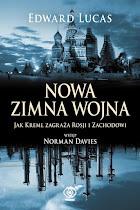Flight attendants
Skivvies of the sky
May 3rd 2007
From The Economist print edition
Femininity in Flight: A History of Flight Attendants
By Kathleen M. Barry
Duke University Press; 328 pages; $22.95 and £13.99
THINK of international air travel these days and it is a fair bet that glamour and luxury, let alone sex, do not leap to mind. But for decades, airlines in America and elsewhere used carefully selected, perfectly groomed young women to persuade their mainly male customers that sitting in cramped aluminium tins for hours at a stretch was a pleasurable experience. Terrorism was the last straw but it was really technology that destroyed the illusion. Once the jet engine allowed mass air travel, pampering and soothing stopped and the whiff of romance became an advertising copywriter's fiction.
Kathleen Barry's history of how gracious stewardesses turned into sexy air hostesses and then into tough, grumpy flight attendants tries hard to be dull, but thankfully does not quite succeed.
It is striking, and shameful, that women had to leave their jobs once they married, were often subject to snap underwear inspections and had to retire at 32. Wise readers will skip the exhaustive descriptions of the trade-union politics that these indignities prompted.
Much more interesting is the way in which the status and reputation of cabin crews mirrored other social changes. In the swinging sixties, a book called “Coffee, Tea or Me?”, which sold more than 1m copies, supposedly chronicled the sexual adventures of young women liberated by contraception and a huge choice of partners (in fact, the pseudonymous author turned out to be a male airline publicist). Airline advertisements, such as Continental's “We really move our tails for you”, seem impossibly lewd to modern eyes. Some airlines expected their female staff to wear outfits including miniskirts, wet-look vinyl, fishnet stockings, hotpants and the like: after all, if the customers weren't happy, they would soon go elsewhere.
After much huffing and puffing from an increasingly unionised and feminist workforce, American airlines largely dropped all this nonsense. Nowadays, flight attendants highlight their role as safety professionals, able to open the aircraft's doors manually, underwater and in the dark.
Ms Barry's book is written from a narrowly national perspective, her view of industrial relations rooted in the adversarial American approach. It would have been interesting to have learned how things changed in the more consensual context of Scandinavian and German trade unionism. And she ignores the way in which Asian airlines still highlight the demure charms of their cabin crew.
The book leaves a sense of nostalgia in its wake. Female cabin crew may have higher formal status and are less likely to have their bottoms pinched (by customers or colleagues). But their job has become both harder and drearier: waitressing in the sky, to diners infantilised by rules and behaviour codes. The result is a polite conspiracy in which both servers and served try to pretend to each other that flying is not quite as ghastly as it truly is.
Friday, May 04, 2007
book review: air hostesses
Subscribe to:
Post Comments (Atom)








No comments:
Post a Comment